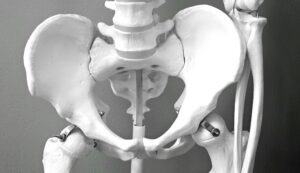De-Armouring Therapy for Emotional Healing and Holistic Well-Being
Understanding Body Armour and Wilhelm Reich’s Legacy
 The concept of “body armour”, and, consequently, de-armouring, was introduced by psychoanalyst Wilhelm Reich in the 1930s. Reich observed that individuals often develop chronic muscular tensions as a way to protect themselves from unresolved emotional pain, past trauma, or psychological stress. These persistent tensions—what Reich called “armour” — form defensive patterns in the body, often unconscious, that restrict energy flow, limit breath, and numb our capacity to feel.
The concept of “body armour”, and, consequently, de-armouring, was introduced by psychoanalyst Wilhelm Reich in the 1930s. Reich observed that individuals often develop chronic muscular tensions as a way to protect themselves from unresolved emotional pain, past trauma, or psychological stress. These persistent tensions—what Reich called “armour” — form defensive patterns in the body, often unconscious, that restrict energy flow, limit breath, and numb our capacity to feel.
Body armour can manifest in various ways, such as tightness in the jaw, shoulders, chest, hips, or pelvis. Over time, these blocks may lead to both emotional numbness and physical discomfort. Reich’s work laid the foundation for modern somatic therapies, many of which focus on helping clients reconnect with their bodies and release the grip of old protective mechanisms.
As Reich theorized, when energy can’t flow freely, the body becomes a holding ground for unprocessed emotion—and that emotional residue shows up as tension and pain.
The Process of De-Armouring

De-armouring is a body-based therapeutic process that helps release these stored patterns of tension, opening up space for emotional expression, physical relaxation, and energetic flow. It involves applying sustained, conscious pressure to specific points or areas of the body where emotional or energetic blocks are most likely to be held.
This may include:
Deep tissue touch or acupressure
Breathwork to enhance bodily awareness
Vocal release or sound to help discharge emotional energy
Mindful presence and empathetic support from the practitioner
As physical tension is released, emotions that have been held in the body — sometimes for years — can surface and be safely processed. People may experience crying, shaking, laughter, or a deep sense of peace. This process is always paced according to the client’s comfort and readiness, and it is important to not go too fast or do too much in order to avoid re-traumatisation.
Cross-Cultural Practices of De-Armouring
While Reich gave us the language of “armouring,” many healing traditions across the globe have long worked with the idea that trauma and emotion are held in the body. In traditional Chinese medicine, practices like acupressure and Qigong are used to restore energy flow. In Ayurveda, treatments such as marma therapy aim to unblock energy points. Indigenous healing rituals also incorporate breath, sound, and movement to facilitate emotional release. Breathwork is a fundamental practice in de-armouring therapy.
What unites these approaches is the recognition that emotional healing often requires a physical component — what happens in the mind and heart also lives in the tissues, muscles, and fascia.
Modern Approaches to De-Armouring
Contemporary de-armouring integrates insights from neuroscience, trauma therapy, and conscious sexuality. Skilled practitioners often use a blend of modalities — including touch, breath, movement, sound, mindfulness and stillness — to facilitate healing. It is important to address any trauma that is present in the body, as trauma can lead to long-term health issues.
A trauma-informed de-armouring session prioritizes:
Consent and communication: Clients are always in control of the pace and depth of the session. Consent is a key element in trauma-informed practices.
Safety and presence: The practitioner creates a grounded, non-judgmental space.
Embodiment and integration: Clients are encouraged to stay connected to their bodies and given tools for processing anything that arises.
This modern evolution of de-armouring is about empowerment — not “fixing” someone, but supporting their own healing journey through mindful, compassionate presence.
Genital De-Armouring

One of the most powerful (and often misunderstood) aspects of de-armouring is work with the pelvic region. The genitals are an area where many people store shame, trauma, fear, or disconnection due to societal conditioning, past abuse, or negative experiences. Genital de-armouring involves gentle, consensual touch to release the emotional and energetic armour stored in these tissues.
The goals are not sexual but therapeutic: to restore sensitivity, ease discomfort, and support individuals in reconnecting with their sexual energy in a safe, empowered way. For many, this process is profoundly healing and can lead to greater body sovereignty and self-love.
Because of the intimate nature of this work, it is essential that practitioners are well-trained, clear in their boundaries, and deeply respectful of each client’s needs and history.
Benefits of De-Armouring
De-armouring can unlock a wide range of emotional, physical, and energetic benefits:
Emotional Release: Safely accesses and expresses stored grief, anger, fear, or sadness.
Restored Sensitivity: Revitalizes areas of the body that have become numb or disconnected.
Increased Energy Flow: Frees up stagnant energy, often resulting in a greater sense of vitality and clarity.
Trauma Integration: Helps release trauma from the nervous system in a grounded, embodied way.
Enhanced Intimacy: Improves connection with one’s own body, leading to deeper intimacy with others.
Empowerment and Agency: Reclaims bodily autonomy and builds trust in one’s own sensations and emotions.
Many clients report feeling lighter, more alive, and more connected to their inner truth after a session.

A Trauma-Informed Perspective
Trauma lives in the body — and so must healing. That’s why modern de-armouring is increasingly trauma-informed. This means practitioners are trained to work with clients who may carry complex trauma histories, recognizing that healing happens at the client’s pace and in their own time.
Sessions are guided by core principles of choice, safety, and embodiment. This approach allows clients to rewire old survival patterns, not through force, but through trust and gentle unwinding.
By creating space for authentic emotional expression and physical release, trauma-informed de-armouring can be a profound path to integration and wholeness.
Recommended Reading
The Body Keeps the Score by Dr. Bessel van der Kolk is a widely respected book on how trauma is stored in the body and how somatic approaches — including de-armouring — can support healing. It can be viewed on Dr Bessel’s website
I offer de-armouring sessions in Teesside / North Yorkshire (within easy driving distance of Leeds, Newcastle, York, Durham) and Central London. For more information: